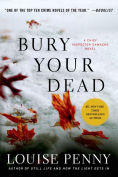A new novel from Lippman is always cause for rejoicing. She has a series of crime novels featuring Tess Monaghan and almost as many stand-alone crime novels, all of them excellent reads. I call them crime novels; they are certainly mysteries, and I make no apologies for loving that genre. However, in these books, what I value more than the puzzle demanding a solution are the story structure and psychological depth. Well, also that they usually take place in Baltimore, a city I know well.
Here, we meet five women who are circling around an empty space in the center of their lives. Felix Brewer, a bookmaker with an office above a club on Baltimore’s notorious Block, has vanished. He’s a self-made man, bursting with confidence and entrepreneurial energy who has run into legal trouble and, facing a prison sentence, disappears in 1976.
He leaves behind his beloved wife, Bambi, and three daughters, as well as his young mistress, Julie, a dancer at the club. As one character remarks, it is the wife who has the stripper name and the stripper who has the country club name, though of course Julie calls herself a hostess. I may not have the reference exactly right. Acing the Bechdel Test, Lippman’s main concern is these five women and how they fare in Felix’s absence, all of them expecting him to return any moment.
The story moves around in time, part of it set in the present of 2012 when Sandy Sanchez, a retired detective who acts as a consultant for the Baltimore Police Department, is given Julie’s murder as a cold case. Julie had disappeared in 1986 and her remains were found in 2001 in Leakin Park, a popular dumping ground due to its many rough and overgrown areas.
The rest of the story takes us back to Felix and Bambi’s meeting, to the events around Felix’s disappearance, and other touchpoints. It should be confusing, but isn’t. Lippman always comes back to Sandy’s investigation, our understanding enriched by whatever story from the past we’ve been treated to.
I loved getting to know these characters. While it raises my ire, I completely understood Felix’s adoration of Bambi and his daughters while having many girlfriends on the side, including a long-term relationship with Julie. I also felt Julie’s pain as she drives past the home Felix shares with Bambi, and her hopes for the future. I loved the daughters: Linda who is practical and bossy, Rachel who keeps everyone’s secrets, and Michelle, the baby who has her mother’s beauty. As we move around in time, we see the women these girls become, and that to me was the most fascinating, the changes they go through.
I was also interested by some of the insights into what it might mean for a woman to be outstandingly beautiful, as Bambi and Michelle are, and what elements other than the physical contribute to that beauty. And, being always interested in friendships between women, I appreciated the subtle movements in Bambi’s relationship with her best friend, Lorraine.
Having recently read Margo Christie’s excellent novel These Days, based on her own experiences working at a club on the Block, I was hoping for more detail about Julie’s and Felix’s work. However, I understand why Lippman chose not to go there, and certainly her choice makes for a better, tighter story.
I’ve learned that if there’s a new Lippman novel in the house, I can forget about getting anything else done until I’ve finished it. I highly recommend this, as well as all of Lippman’s novels.
Have you read any novels recently that passed the Bechdel Test?









